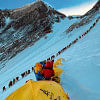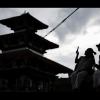Gen Z chose Nepal’s new PM in Discord ahead of official announcement

Nepal's political crisis took an unusual turn this week when thousands of young protesters turned to Discord, a social media platform more commonly associated with online gaming, to rally behind the country's next leader.
Their choice, former Nepalese Chief Justice Sushila Karki, was sworn in on September 12 as the first woman to serve as Nepal's prime minister, heading an interim government after weeks of unrest.
The protests, primarily against corruption, were largely driven by Generation Z (people born roughly between 1997 and 2012), gained traction after authorities attempted to restrict social media use in the Himalayan state.
Demonstrators, many in their teens and twenties, organised through online channels to coordinate marches, share updates and eventually vote on potential candidates. The most prominent hub was a server on Discord called 'Youth Against Corruption', which at its peak drew more than 130,000 members, according to a recent report by India Today.
According to a recent report from the South China Morning Post, more than 7,713 ballots were cast in the final round on September 10, with Karki reaching a majority over 50 percent. Karki met President Ram Chandra Poudel and Nepal's army chief, General Ashok Raj Sigdel, ahead of her official appointment on September 12.
However, it is not clear if the Discord vote directly affected in formally choosing Sushila Karki as the prime minister of Nepal.
Discord, launched in 2015 by Jason Citron and Stanislav Vishnevskiy, was originally designed as a tool for gamers to communicate during play. Its simple interface and mix of text, voice and video functions have since attracted a younger audience, especially during the pandemic, when usage expanded far beyond gaming circles.
Discord servers can host hundreds of thousands of users, creating sprawling online communities with channels for news, discussion and coordination.
For Nepal's protesters, the platform became an essential organising tool. Within the Youth Against Corruption server, volunteers created channels for fact-checking, emergency support and logistics, in addition to the leadership vote. This structure allowed demonstrators to manage information flows in real time, avoiding the banned major social media platforms such as Facebook, Instagram, X, LinkedIn among others.

 For all latest news, follow The Daily Star's Google News channel.
For all latest news, follow The Daily Star's Google News channel. 








Comments